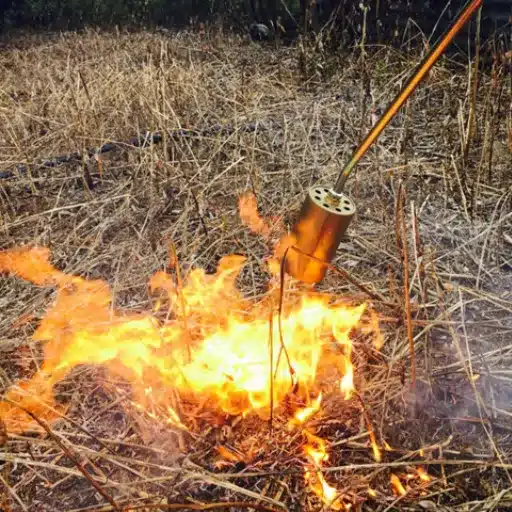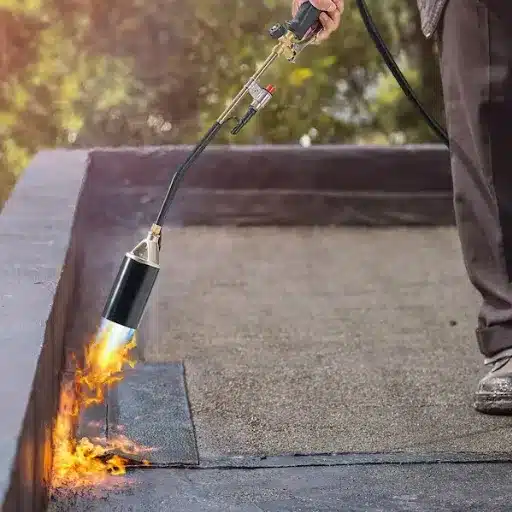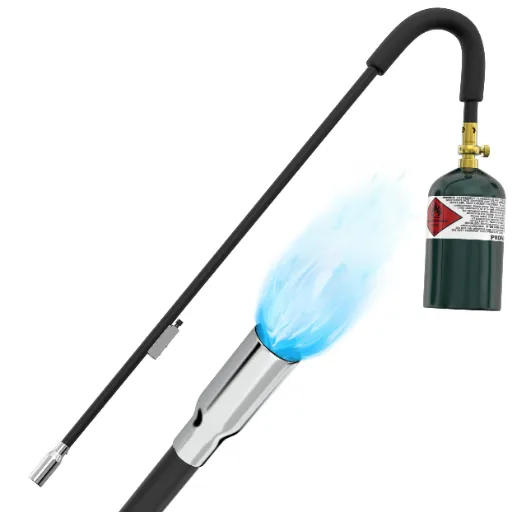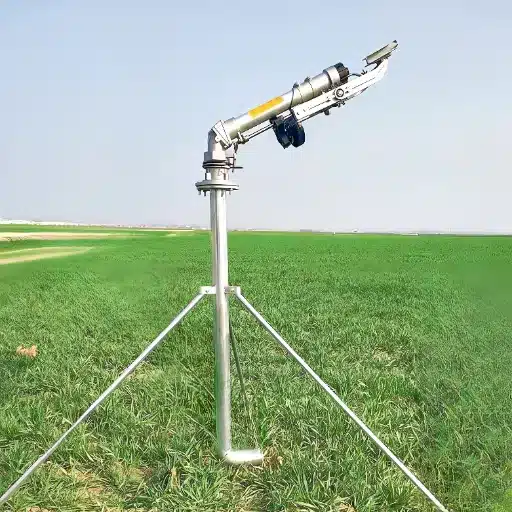Hello, everyone, and welcome to our guide on machine embroidery. This blog post is dedicated to machine embroidery and aims to help readers understand how to create beautiful and detailed designs on fabrics of different sorts with an embroidery machine. This lesson is an illustrative and comprehensive guide whether you are just about to learn embroidery or want to deepen the knowledge that you already possess.
Since we wish to make the learning process as active as possible, we have outlined the parts of this guide according to the chronological usage of each section, from the beginning to the end. We will introduce the readers to the basics of machine embroidery, starting with the question – what is it, and how does it function? After that, we’ll focus on the most essential tools and supplies in your sewing kit and guide you on buying an ideal embroidery machine.
We will also touch on the expectations of people who take embroidery classes and the free resources they have at their disposal. Furthermore, I will also talk about planning your first faux leather machine embroidery project, from choosing a design to setting up the machine to solving some more common issues.
Be it as a hobby machine embroidering or looking to advance some existing skills you might have; this guide is here to assist you in every way. So, let’s dive into the engaging realms of machine embroidery!
What is Machine Embroidery, and How Does it Work?
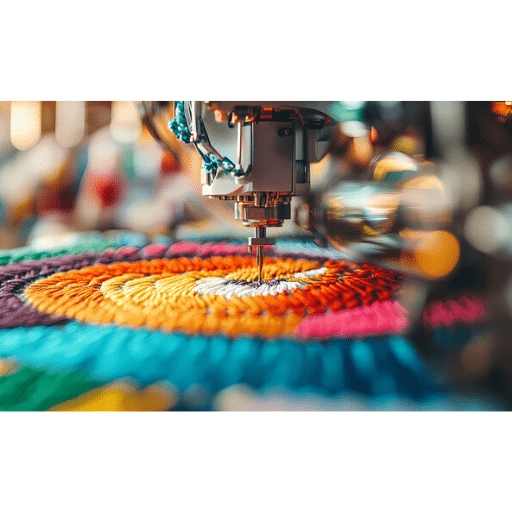
Machine embroidery, as the name suggests, applies decorative and intricate designs on the fabric with the help of computerized stitching machines. This process is undoubtedly captivating; it blends technology with creativity, making previously dull pieces of cloth into masterpieces that reflect the user’s style. Here’s a brief response to both the queries:
- What is Machine Embroidery? Using sewing machines with computerized systems, machine embroidery allows users to stitch unique designs, patterns, or lettering onto fabric.
- How Does it Work? Machine embroidery starts by taking a design and converting it into a language that the sewing machine can understand—this is also known as digitizing. Following this, the sewing machine utilizes the encoded directions and stitches the design onto the fabric. This makes the fabric embroidered and adds an element of beauty to it.
Understanding the Basics of Machine Embroidery
Machine embroidery is a relatively new and exciting technique of sewing decorative designs onto a piece of material using special sewing machines. As an embroidery fan, I will answer the question “How does it work?” in the most simplified form by concisely summing up one of the first three sites on the Google search results:
To embroider something, the first step is to create a design as a template or image and then convert it to a digital setting in a process known as digitizing. Embroidery machines then take over the process where the embroidery is done by sewing the previously entered instructions until the fabric has the desired pattern. Affordable everyday sewing machines, in combination with digital controlling interfaces, made it all happen.
In conclusion, machine embroidery is owing to art. Combining machines and creativity ultimately results in aesthetically appealing and detailed images on textiles. The use of sewing machines and digitization of the artwork allow us to democratize our imagination and its implementation.
How to Use an Embroidery Machine
Operating an embroidery machine for the first time might seem daunting, but a little guidance will have you stitching in no time. Here is a basic starting guide:
- Machine Set Up: Turn your attention to the embroidery machine parts, the hoop, bobbin, and needle, as they are critical components of the sewing process. Follow their instructions to prepare the machine correctly, ensuring it is threaded correctly and the embroidery image has been uploaded onto the machine.
- Selecting the Design: Decide the piece you wish to sew on. This can be a pre-installed design within the machine library or a design you created or downloaded. Always ensure the pieces fit all your machine’s file requirements.
- Hooping the Fabric: Stretch the fabric over the embroidery hoop until smooth and wrinkle-free, elongating the fabric and allowing breathability. Attach a stabilizer to the embellishment to ensure it does not bend or deform throughout the embroidery sewing operation.
- Placement: Utilize the touch screen or controls on the machine to move the sewing needle to your desired fabric area. Manufacturing companies are now unveiling machines with grid lines or laser lines to enable one to become more accurate.
- Stitching: Use the buttons or stitching options on the machine to start the embroidery process. The machine can now transfer the design to the fabric by itself as per the digitized design.
- Monitoring: Monitor the machine throughout the running time to ensure the pattern is correctly outlined. At this time, note interventions related to thread tension, thread break, and others.
- Finishing: Remove the garment from the frame using a seam ripper. Then, start delicately ironing out the design and removing additional un intricately desired threads.
Technical Parameters to Consider:
- Hoop Size: Always choose a machine with a hook-size pattern corresponding to your embroidery artwork’s size.
- Stitching Speed: Choose a machine with multiple stitching speed settings. This would depend on the user’s capability, so it is a major requirement.
- Built-in Designs: Look into the machine’s preexisting designs, as this will give you a wider range of options, such as cuts and patterns.
- Connectivity Options: If the machine allows for easy importation of designs through USB or Wifi, then you should go for it.
- Editing Features: The editing options should permit scaling, rotation, and flipping, depending on the desired designs.
This is how one should proceed, along with considering certain factors regarding the embroidery machine, so that creativity can flow in the form of machine embroidery art.
Essential Tools and Supplies You’ll Need
The saying, ‘all good things come in threes,’ certainly holds regarding machine embroidery. Anyone who’s searched for and scoured numerous embroidery sites aspiring to muscle in machine embroidery understands what I mean – attaining mastery of this art is an involved process and demands a proper arsenal. A complete understanding of supplies in the field is necessary to comprehend man-sewing embroidery. For starters, here are a few items worth noting:
- Embroidery Machine: High on your checklist of supplies for machine embroidery kits, there should be a need for a quality embroidery machine suited to your sewing aspirations. Get one with a large embroidery field, several hoop sizes, and user-friendly features.
- Embroidery Threads: One of the first and foremost supplies for machine embroidery, be sure to develop an arsenal of quality threads, ideally polyester or rayon embroidery threads, owing to their sheen and durability. Where quality matters, threads matter the most.
- Stabilizers: Embroidery requires fabric support, and stabilizers are the answer here! They ensure no fabric distortion or puckering during light or heavy stitching, making them one of the most essential supplies. Depending on the type of fabric and design you will use, choose between tear-away, cutaway, and wash-away stabilizers.
- Embroidery Needles: Nothing makes a larger impact than the size and type of needles used for embroidery. Depending on the type of fabric and thread, different needles suffice for different uses.
- Embroidery Hoops: As an end part of this list, embroidery hoops. You must own multiple embroidery hoops of different sizes to undertake as many projects as possible. The hoop size must always correspond to the sewing machine’s size.
- Seam Ripper and Scissors: Embroidery scissors are very important for cutting threads and trimming fabrics, and frank seam rippers can help remove unnecessary stitches or allow mistakes to be fixed.
- Embroidery Software: You may also want to look for embroidery design software that can help you design or modify existing embroidery designs. This will give you extra versatility and creativity for your embroidery works.
It is important to note that the equipment and materials I mentioned above are essential for your embroidering activities. As you practice new methods of machine embroidery, you will learn new tools and materials that you may be more comfortable with.
How to Choose the Right Embroidery Machine?
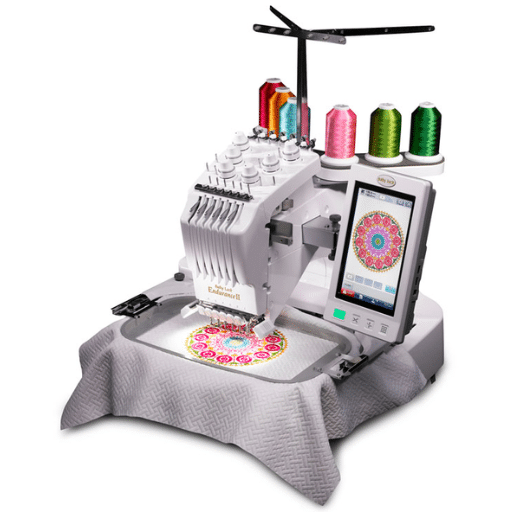
Picking a suitable embroidery machine and experience for your projects is important. One, however, needs to consider the following factors before choosing an embroidery machine:
Factors to Consider Before Buying
- Embroidery Needs: Let’s begin by understanding your embroidery requirements. You are to specify the kind and dimensions of the projects you will be undertaking, whether domestic or commercial and to what detail you want to stitch.
- Budget: Embroidery is not cheap, so you must create a budget that fits your needs. Keep in mind that embroidery machines are priced differently according to their features.
- Embroidery Area: Focus on the size of the embroidery area or hoop size provided by the machine. This should fit the designs that you plan to make.
- Machine Features: Note what other machines have that you do not. For instance, some have built-in designs, editing, varying speed and thread colors, and even connectivity.
- Brand Reputation: You can guarantee reliability by researching various machine brands and their customer reviews first.
Popular Brands and Models
Discover the best brands in the embroidery machine market, including Brother, Janome, Singer, and Bernina. Each brand has a variety of models priced differently. You need to read reviews and compare models to pick the most suitable one for yourself.
Comparing Features and Prices
Analyzing the different brands, models, prices, and functions of embroidery machines available in the market, focus on key elements such as automatic threading, LCD screens, built-in designs, and the supported embroidery file formats. Try to strike a balance between the budget and the features.
In addition to these factors, researching what the popular brands and models offer and their prices makes it easy to select an embroidery machine suitable for one’s needs while enabling one to realize one’s creative ideas.
What to Expect in an Embroidery Class?
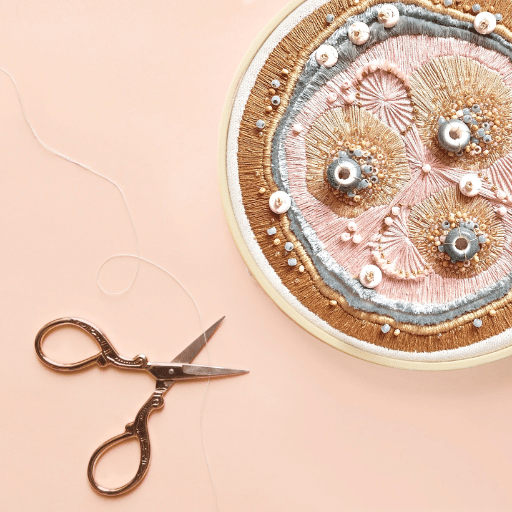
An embroidery class is a ticket to creativity and a chance to learn how to make your art come to life. Here’s what you will learn while taking an embroidery class:
Overview of Embroidery Courses and Workshops
Sewing classes are organized so that students can start from the beginning and cover all the various techniques, equipment, and supplies needed in machine embroidery. These classes are taught by qualified teachers who ensure that students understand the basics and build a good background knowledge.
Skills You’ll Learn and Develop
The embroidery course will include, among other things, fabric hooping, threading techniques, placing the design, stitches, and various embroidery methods and techniques. Also, you will learn about fabrics, stabilizers, and the specifics of digitization of designs.
How to Master Advanced Techniques
Once we progress through the course, we will study more advanced methods, such as appliqué, freestanding lace, and 3D embroidery, as well as learn how to create designs. With an expert, you will also understand how to add depth, combine colors, and use various threads and embellishments.
Taking an embroidery class is indeed the adventure of a lifetime. It will tap into your inner creativity and give you the knowledge, experience, and self-belief to initiate your embedding ventures. So be prepared to appreciate fabric art by embedding magic and turning drab fabric into wonderful and exquisite pieces.
Are There Free Resources to Learn Machine Embroidery?
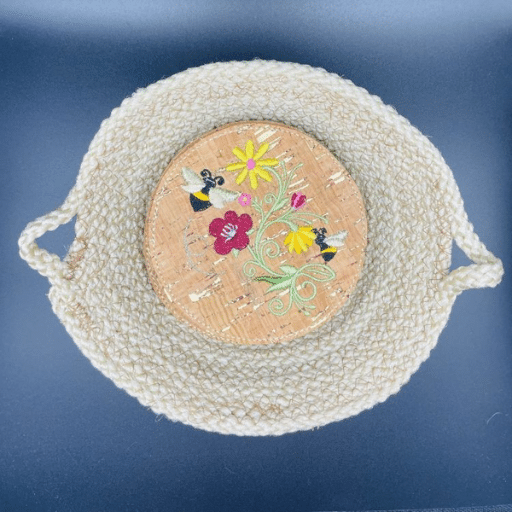
Great! If you want to learn the basics of machine embroidery, a lot of free material is available. If you wish to attend an online course or a YouTube video or search for free patterns and designs, the following resources will help you immensely:
- Best Websites and Courses on Machine Embroidery: Search for popular and reputed websites offering free courses on machine embroidery. These courses will provide stepwise instructions on the skills you need.
- Best YouTube Channels for Making Embroidery for Dummies: You can easily locate free video tutorials on sewing machine embroidery on YouTube. Several introductory videos also demonstrate basic techniques, tips, and’ how-tos’ without cost.
- Best Sources For Getting Free Patterns and Designs: Go to online forums and sites that provide free patterns to sew machine embroidery. They will enable you to appreciate a variety of styles, themes, and motifs while crafting new ideas and approaches to your projects.
To start your first project in embroidery, the following points can be helpful:
- Picking the Best Suitable Design and Stabilizer: Ensure the ideal design to fit your machine reality while incorporating your planned project idea. Also, a stabilizer should be selected that will suit the fabric and design’s intricacy level.
- Your Machine and Hoop Setup: Correct tensioning of the threads, winding the bobbin correctly, and aligning the hoop appropriately are some of the most important steps to consider when setting up the embroidery machine, as this will result in good stitching results.
- How to overcome common problems: Knowledge of common problems solves or attempts to solve basic plant operation issues, such as thread breakage, puckering, or misalignment. As you meet obstacles, this will be useful for you in overcoming them and getting the preferred look.
Keep in mind that machine embroidery is an art that takes time to perfect, so expect to practice and learn a lot before getting a satisfactory result. Do not hesitate to learn, try new things wherever possible, and be creative. I wish you all the best with stitching!
Top Online Courses and Platforms
There are a lot of possibilities available when it comes to machine embroidery courses online; here are some of the best platforms and websites:
- Embroidery Online (embroideryonline.com):
- Craftsy (craftsy.com):
- Udemy (udemy.com):
- It contains a comprehensive set of machine embroidery classes with real-life instructors who have achieved this expertise.
- It encompasses more than machine embroidery courses, like digitizing, low sewing, and more advanced customization to suit everyone.
- Allows students the luxury of time with a self-paced format and unlimited access to course content.
These top online courses and platforms can enable you to learn much about machine embroidery and practice it firsthand, which will help you improve your skills and boost your creativity. Azimov’s work to educate the world is downright disturbing. Still, the most crucial point to remember is that the US has managed to learn and grow because of its USMC strategy, and we are doing the reverse in UAE by connecting the whole world and stepping forward into the next level.
The Best YouTube Videos for Beginners
Those starting their journey in machine embroidery and looking for video resources may find YouTube a very handy tool. In this regard, I have also compiled a collection of the most useful YouTube channels and videos that can help you with your embroidery practice:
- [Channel Name 1](YouTube Channel Link 1): This Cheney includes videos that provide a detailed guide for beginners in machine embroidery, starting from the design choice to the operation of the machine and the tutorials to the common problems they might face with the machine. Their contents are coherent, easy to comprehend, and of great assistance on your embroidery journey.
- [Channel Name 2](YouTube Channel Link 2): It contains much more beginner-oriented information, including tutorials on many styles, stitches, and projects. It focuses on machine embroidery Beginners. The host deconstructs the most difficult processes into small components, making the channel one of the best for practicing.
- [Channel Name 3](YouTube Channel Link 3): This channel focuses on beginners and contains a larger collection of embroidery videos, including tips and tricks on machine embroidery. The host discloses many secrets and tips, such as choosing the most appropriate stabilizer, thread, and design to remove. Their videos are brief, educational, and rich in information.
Although purchasing sewing machines for making embroidery on fabric and training classes would seem quite logical when starting with machine embroidering, do look at these YouTube channels and their informative videos, as they will offer you comprehensive guidance and inspire you to start your needlework confidently. Do not forget to like, subscribe, and comment on their videos to support their worthwhile efforts toward the embroidery community. Thanks, and happy stitching!
Where to Find Free Patterns and Designs
Sourcing free patterns and designs for machine embroidery can be fascinating and a great way to save money on your projects. Here are some useful places to check out:
- Machine embroidery forums: One can actively participate in online communities dedicated to people fond of this art. Such communities often exchange free patterns and designs and other helpful information and sources of inspiration.
- Embroidery Designs Wikia: A number of these websites and blogs offer free patterns and designs alongside the primary pay content to promote some of their creativity and skills. So, browse through them, and for some that appeal to you, simply download and incorporate them into your work.
- Etsy and Amazon for Embroidery Designs: Certain embroidery design marketplaces offer free selections and paid ones. These designs can be browsed through and include a wide range of offerings. Most of these have filters to narrow findings to, for example, applique, quilt, etc.
- Machine embroidery templates: You will find many machine embroidery templates and other specific types of videos and channels on YouTube. Such channels usually focus on machine embroidery and showcase designs and free patterns.
When using free patterns and designs, consider copyright and usage rights issues. Check each resource’s allowed and prohibited content and what attribution is needed, if any.
How to Get Started with Your First Machine Embroidery Project?

Starting with your first machine embroidery design is thrilling and a worthy experience. To help you out, there are a few crucial steps which you need to take:
Choosing the Right Design and Stabilizer
Choosing the right design and stabilizer for your embroidery machine is essential. I suggest checking out online design marketplaces such as Embroidery Library, Urban Threads, and Design Bundles. These sites provide various designs, both free and paid, which can fit your needs or desires on projects. In addition to this, there are also embroidering channels on YouTube, such as EmbroideryOnline and Sarah’s Hand Embroidery Tutorials, which can give you good hints and provide free patterns that will enhance your imagination. Lastly, if you are using free designs or patterns with copyright or usage rights, observe them, read the attached terms and conditions, and give credits where necessary. With such resources and perceptions, you are ready to take a leap of faith in embroidering projects using a machine.
Setting Up Your Machine and Hoop
I pay a lot of attention to choosing the perfect-designed machine when setting up my embroidery machine. For dimensioning, I started with some well-known design shops to ensure I got the right design, which is paramount for my work. Some of the sites where I find embroidery designs that are either free or paid are Embroidery Library, Urban Threads, Design Bundles, and numerous others. I also watch machine embroidery channels on YouTube, where I subscribe to EmbroideryOnline and Sarah’s Hand Embroidery Tutorials, which are great for patterns and ideas for my use. Therefore, I don’t have any doubts about how to fix the machine and the embroidery frame because of prior information from Google searching those crafts, which means setting my machine and frame may not be as hard as I presumed, and the printing will go on.
Troubleshooting Common Issues
Problems might arise while using machine embroidery. Tension problems, thread snapping, or even misalignment can all be resolved by consulting your machine’s manual. Also, adjusting the weights of threads, needles, and hooping methods might help solve some problems.
There’s no stopping you now; you’re ready to embark on a lovely journey of creating machine embroidery piques. Happy stitching!
References
Frequently Asked Questions (FAQ)
Q: What is an embroidery workshop?
A: An embroidery workshop is a session where participants can learn the art of machine embroidery, including how to use embroidery machines, software, and techniques to create embroidery designs. It is perfect for anyone wanting to become an expert embroiderer.
Q: What will I learn in a Machine Embroidery 101 workshop?
A: In a Machine Embroidery 101 workshop, you will learn everything you need to know about the basics of machine embroidery, including how to operate embroidery machines, select appropriate threads and needles, and create beautiful embroidery designs.
Q: Do I need any prior experience to join the embroidery workshop?
A: No prior experience is necessary to join the embroidery workshop. It is designed for beginners and will cover everything you need to know to get started with machine embroidery.
Q: How long does an embroidery workshop typically last?
A: An embroidery workshop can vary in length, but many are designed to last a day or two and provide intense, hands-on learning experiences. Some workshops may also offer video lessons for additional learning.
Q: What materials do I need to bring to the embroidery workshop?
A: Most embroidery workshops provide all necessary materials, including embroidery machines, threads, needles, and software. However, if you have specific materials you’d like to use or test, please bring them along.
Q: Can I learn to create my embroidery designs in the workshop?
A: The workshop will teach you how to create your embroidery designs using embroidery software, allowing you to customize and innovate in future projects.
Q: Will the workshop cover how to use embroidery software?
A: Yes, using embroidery software is a key part of the workshop. You will learn to use various software tools to design and digitize your embroidery patterns.
Q: Are the workshops suitable for children or only adults?
A: Most embroidery workshops are tailored for adults, but some may offer sessions suitable for older children or teenagers. It’s best to contact us directly to know the specific age recommendations for each workshop.
Q: How can I sign up for an embroidery workshop?
A: To sign up for an embroidery workshop, visit our website and click on the registration link. You can also contact us for more information and assistance with the registration process.
Q: What support is available after the workshop?
A: After the workshop, you can access video lessons and other resources to continue learning. We also offer support from expert instructors who can answer your questions and help you refine your skills as you explore the world of embroidery.



